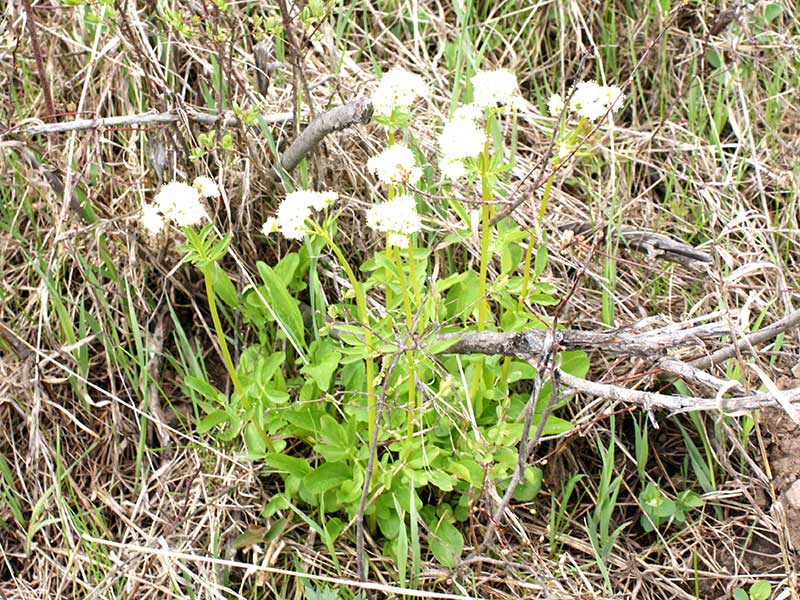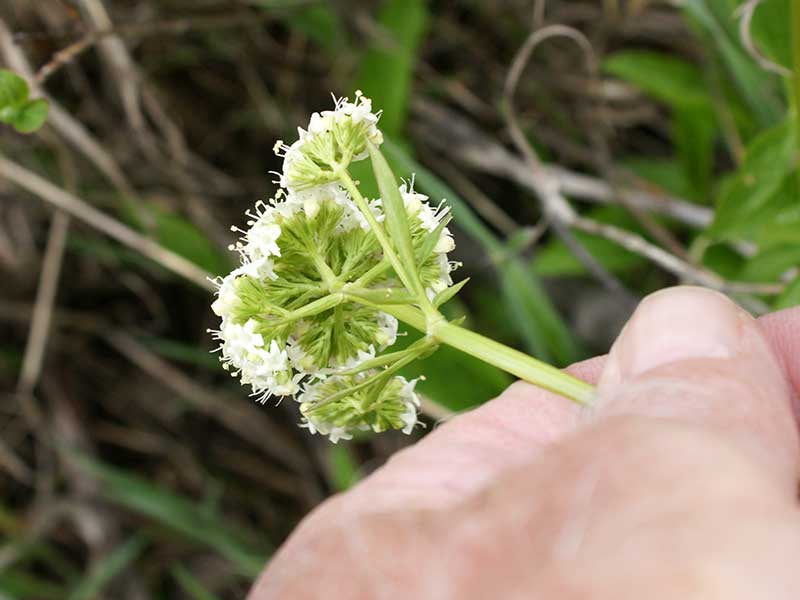Valeriana dioica / wood valerian
- perennial herb, up to 18″
- stem leaves lobed with egg-shaped “leaflets”
- inflorescence – compact, round-topped umbel-like cluster; white flowers
- flowers are teeny! ca. 1/8″ with protruding stamens
- mostly in dry to moist forests
Also known as: marsh valerian
Assuming I am anywhere near right on this identification, the full name of this species is Valeriana dioica spp. sylvatica. The subspecies name is “significant” because this one is native to North America, while spp. dioica is native to Eurasia.
Wood valerian is a perennial herb growing from a stout, branched rhizome or a branched caudex. It puts up a single, erect stem below the inflorescence, up to 18″ tall. It has both basal and stem leaves. The former have long petioles and are egg shaped and undivided. These are harder to see than the stem leaves. Those, arranged oppositely, have short petioles, and leaves divided into several somewhat lance shaped lateral lobes and a larger terminal lobe.
The wood valerian Inflorescence is a compact, round-topped dense umbel-like cluster of white flowers. As it expands, it is much more open and more clearly a panicle. The flowers are tube shaped with 5 lobes, fused petals, but only 1/8 inch (4 mm) long. The individual flowers are bisexual or female. Stamens extend well beyond the petals, i.e. they are exserted.
Later in the summer, the flowers give way to the fruits, in this case a small achene (sort of dandelion-like).
Wood valerian is found in dry to moist forests, and in grasslands and meadows. If you find it in the fen, it may be spp. dioica, a non-native type.
| Color | |
|---|---|
| Blossom size | |
| Family | |
| Inflorescence size | |
| Inflorescence type | |
| When? | |
| Where? | coniferous forests, fens, forest gaps and roadsides, moist meadows, shaded edges |



